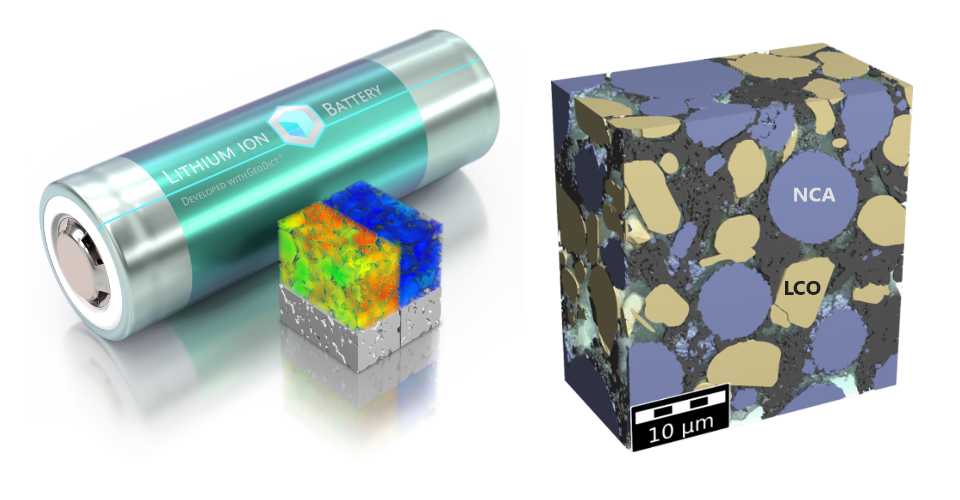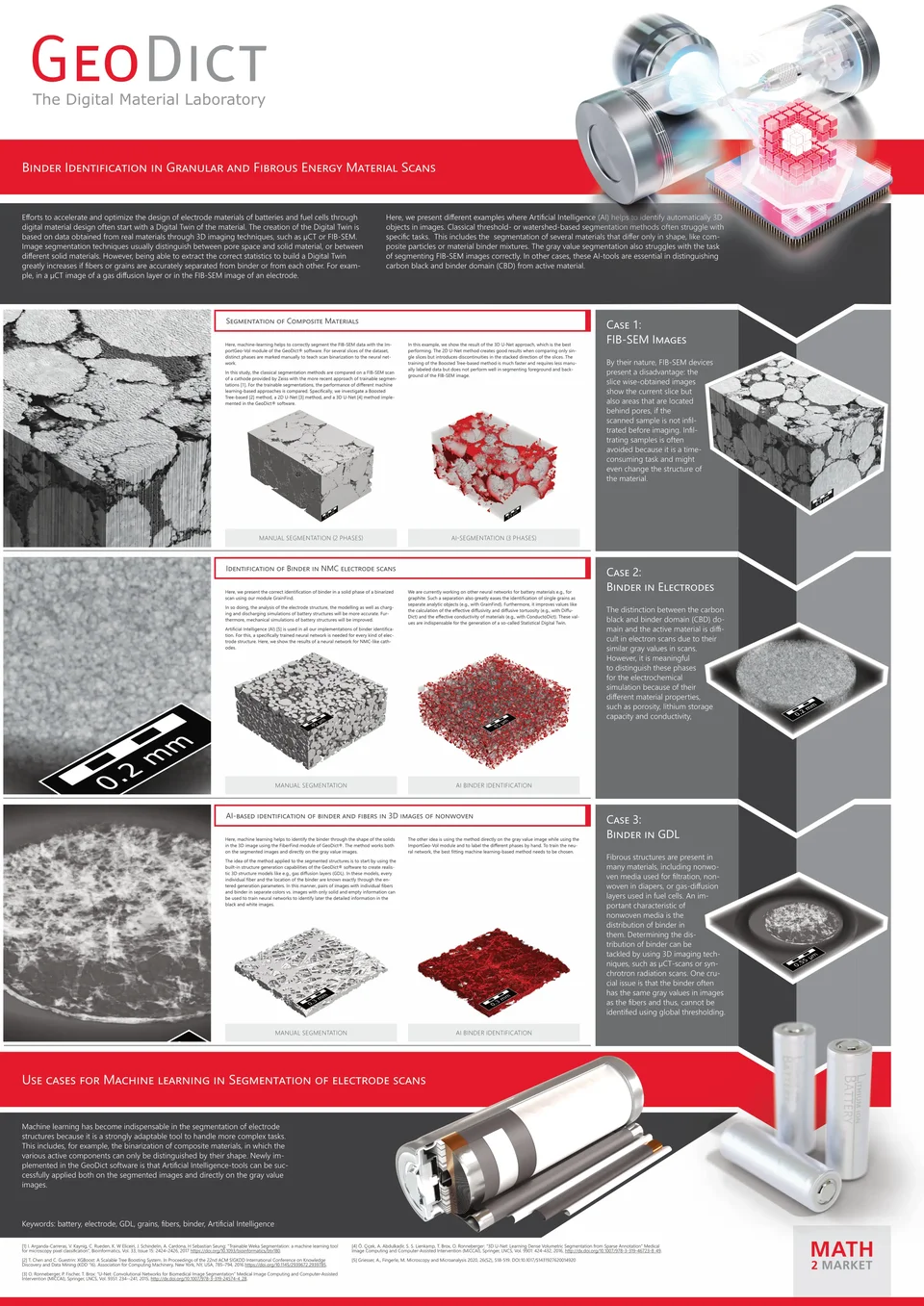Binder Identification in Granular and Fibrous Energy Material Scans
Abstract
Carbon black and binder domain (CBD) and active material are often difficult to distinguish in scans of electrode structures, although they have widely different material properties. CBD is porous, cannot store lithium and has a higher electronic conductivity. Thus, being able to separate them in scans is an important step towards improving the:
- Analysis of electrode structures, e.g., the calculation of the effective diffusivity of the electrolyte and the effective conductivity in the solid phase, and the calculation of diffusive tortuosities.
- Modelling of battery structures, as a way to optimize them using simulations.
- Charging and discharging simulations of battery structures.
- Mechanical simulations of battery structures.
Here, we present the correct identification of binder phases in scans of granular and fibrous materials and the identification of binder in solid phases of binarized scans, in which the solid phase was separated from the fluid phase. Artificial Intelligence (AI) [1] is used in all our implementations of binder identification.
For all scans, distinct phases are marked manually to teach scan binarization to the neural network. In the process, previously incorrectly assigned sections are correctly marked before the neural network is run again. A blended NCA-LCO cathode segmentation is shown as example.
A specially trained neural network is needed for every kind of electrode structure. We show the results of a neural network for NMC-like cathodes and another for graphite anodes. This greatly eases the identification of single grains as separate analytic objects [2].
Additionally, we show the results of a neural network specialized in finding binder in binarized structures that contain a solid phase, in which binder and fibers are not separated. This separation also facilitates the identification of single fibers, even curly ones.

References
[1] Griesser, A., Fingerle, M. Microscopy and Microanalysis 2020, 26(S2), 518-519. DOI:10.1017/S1431927620014920
[2] Biebl, F. et al., 9th Conference on Industrial Computed Tomography (iCT) 2019, Padova, Italy, https://www.ndt.net/search/docs.php3?id=23670
